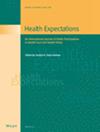Investigating the Factors Behind Patients' Desire and Decision to be Accompanied: A Cross-Sectional Analysis
Abstract
Introduction
Medical education typically focuses on the dyadic interaction between patient and physician. However, there is another significant presence in the room that can also impact the patient's health outcomes: caregivers. This topic has been relatively underexplored until now, and there is insufficient information available regarding situations in different cultures. In this study, we aimed to separately examine the characteristics of patients that influence the frequency of being accompanied and those that affect patients' preferences regarding the presence of a companion.
Methods
This cross-sectional study was conducted in family medicine clinic of a tertiary hospital. During a period of 15 days, a total of 285 patients who visited the clinic were administered the questionnaire face-to-face. Two logistic regression models were used for dependent variables of “actual” and “desired” situations of admitting to healthcare service with companion.
Results
Of the participants, 167 (58.6%) were female, and the mean age was 36.8 ± 16.2 The sole significant factor, influencing actual visits to be occurred with a companion, was the solution for transportation issues (odds ratio [OR]: 26.25). It was found that unmarried individuals (single/divorced/widowed) (OR: 5.47), those with higher income (OR: 1.84), and older individuals (OR: 1.04) had a higher tendency to prefer visiting the clinic with companion while female are as opposite (OR: 0.50). Anxiety, perceived social support, and health literacy weren't associated with actual situation or desire to have companion.
Conclusion
Patients have companions to address tangible issues. However, different factors may influence the desire to have a companion. There is a large group of individuals who, are accompanied at clinic visits against their wishes, indicating a conflict between being accompanied and the desire for one.
Patient or Public Contribution
Our study was inspired by the unsolicited comments of patients made about their companions during clinical visits. Additionally, community provided valuable feedback during the pilot application phase, particularly in the development of the data form.

 求助内容:
求助内容: 应助结果提醒方式:
应助结果提醒方式:


